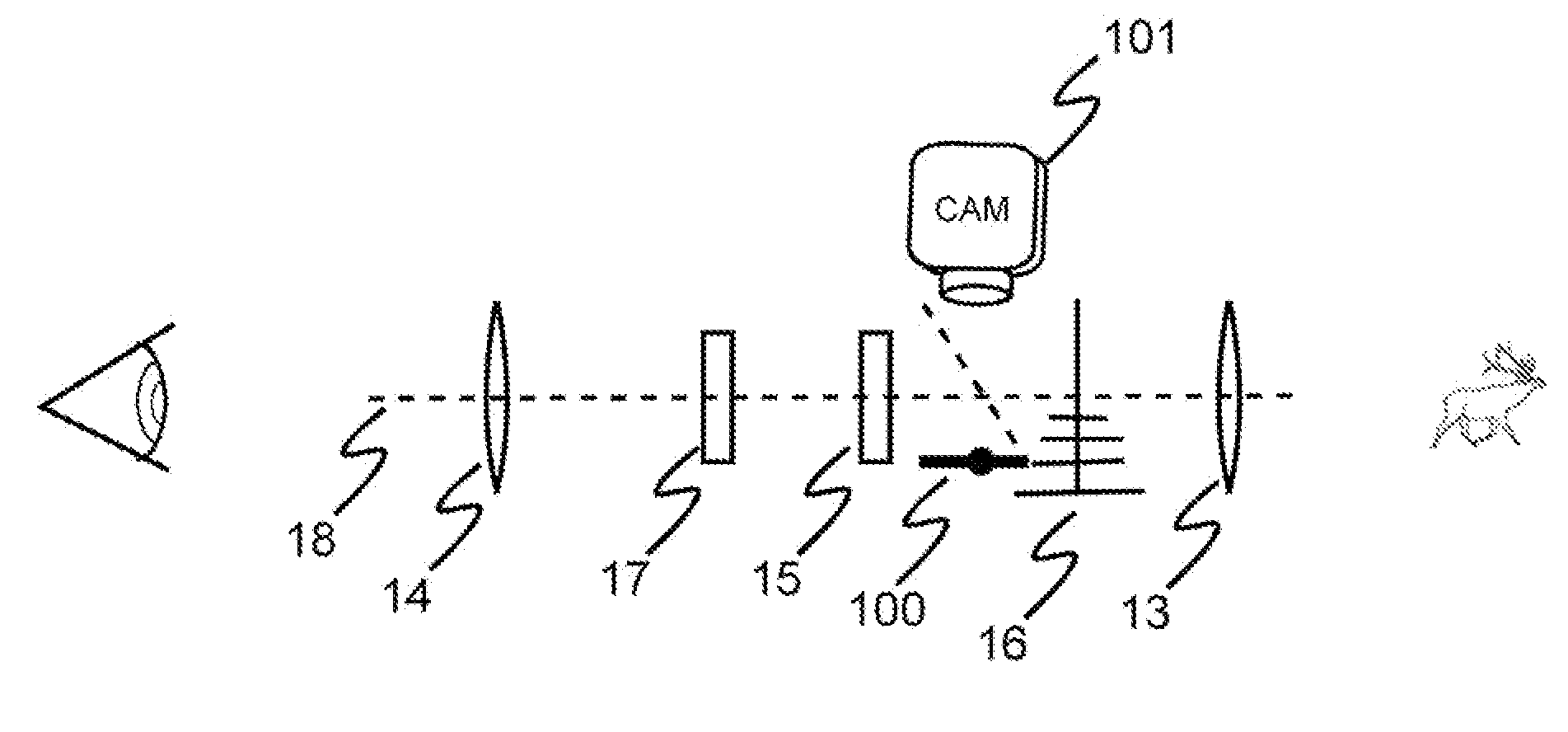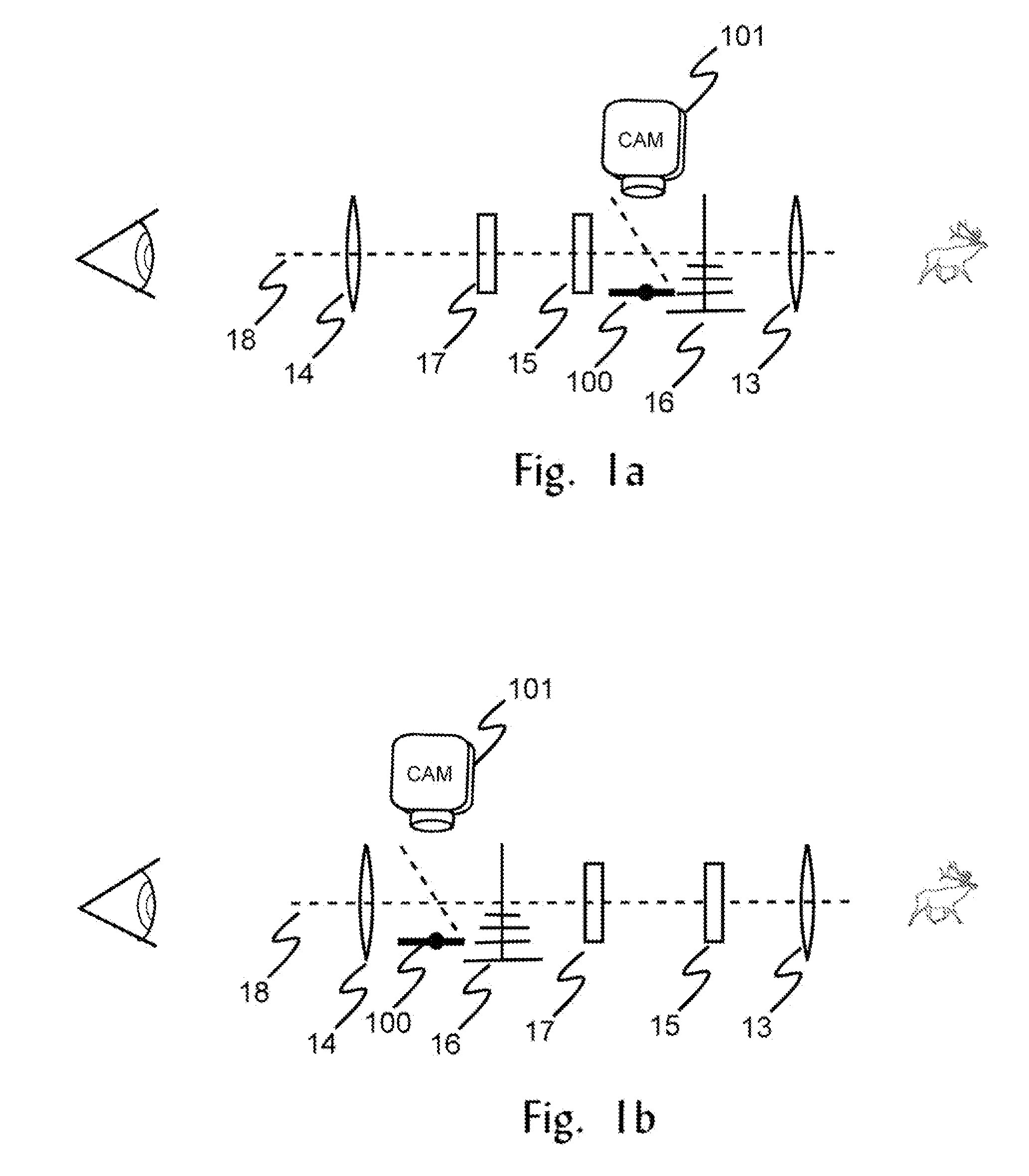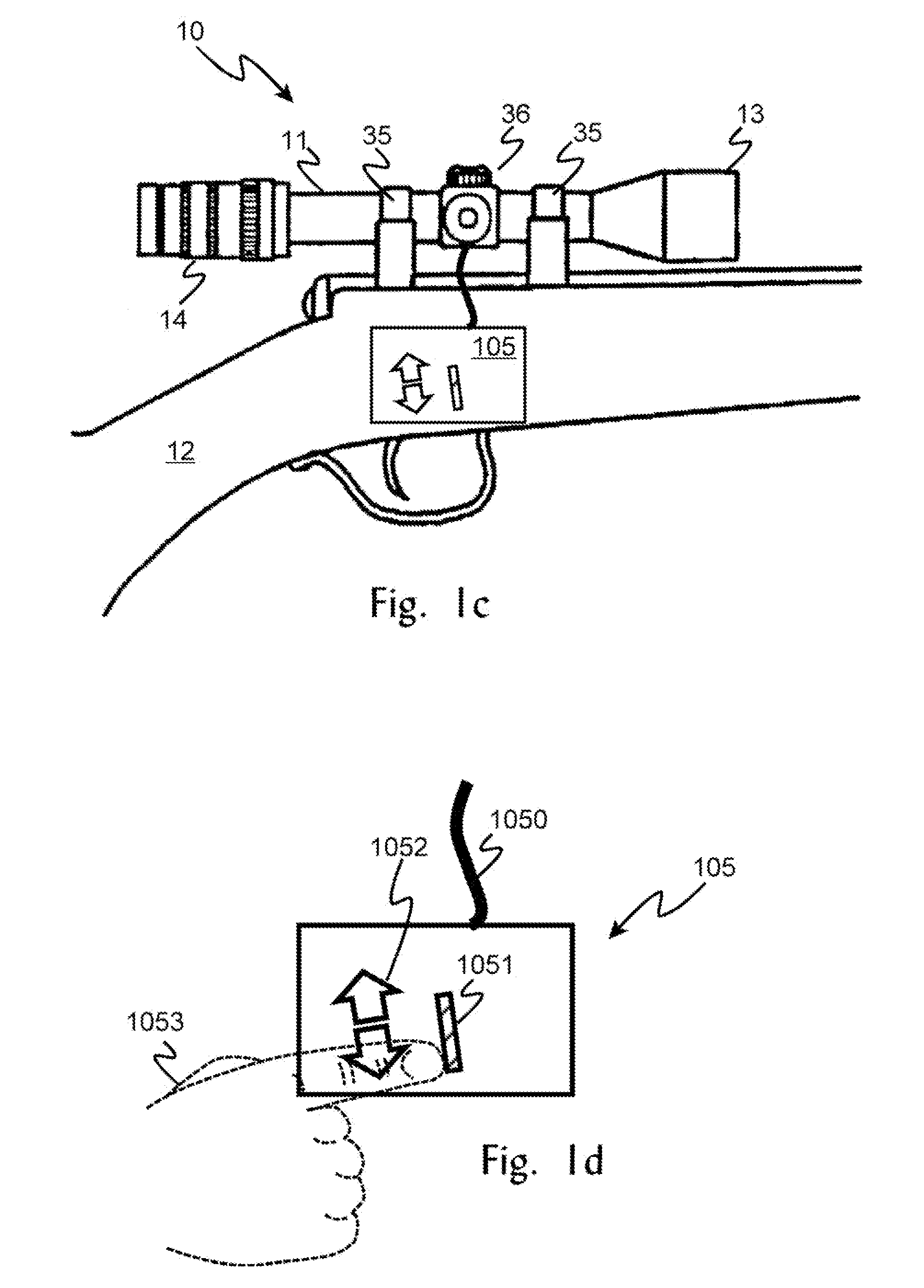System and Method for Determining Target Range and Coordinating Team Fire
a range finding and target range technology, applied in the field of system and method for determining target range and coordinating team fire, can solve the problems of dangerous use of range finding devices emitted by signal scattering, inconvenient use, and difficulty in accurately predicting the impact point of projectiles
- Summary
- Abstract
- Description
- Claims
- Application Information
AI Technical Summary
Benefits of technology
Problems solved by technology
Method used
Image
Examples
Embodiment Construction
[0029]For the reader's conveniences, issued U.S. Pat. Nos. 7,237,355; 7,222,452; 7,194,838; 7,069,684; 6,591,537; D456,057; and 6,357,158 provide a great deal of background information regarding riflescopes and use of my other riflescope inventions. The present invention is preferably realized in conjunction with my previous riflescope inventions, but may be realized separately, as well.
[0030]Turning to FIGS. 1a-1c, a telescopic sight 10, embodying this invention is shown attached by a suitable mount 35 to a gun 12. The sight 10 is formed by a tubular housing 11 containing a forwardly positioned objective lens element 13, a rearwardly positioned ocular or eyepiece lens element 14, an intervening erector lens element 15, and a reticle 16 disposed between the objective lens element 13 and the erector lens element 15. In the case of vari-focal or zoom scopes, a positionally adjustable magnifying lens 17 is associated with the erector lens element 15. The exterior of the housing 11 may ...
PUM
 Login to View More
Login to View More Abstract
Description
Claims
Application Information
 Login to View More
Login to View More - R&D
- Intellectual Property
- Life Sciences
- Materials
- Tech Scout
- Unparalleled Data Quality
- Higher Quality Content
- 60% Fewer Hallucinations
Browse by: Latest US Patents, China's latest patents, Technical Efficacy Thesaurus, Application Domain, Technology Topic, Popular Technical Reports.
© 2025 PatSnap. All rights reserved.Legal|Privacy policy|Modern Slavery Act Transparency Statement|Sitemap|About US| Contact US: help@patsnap.com



